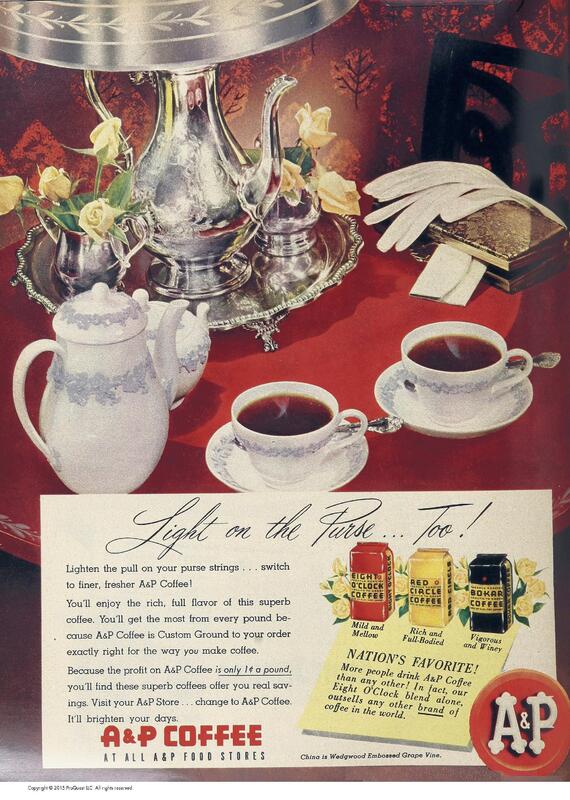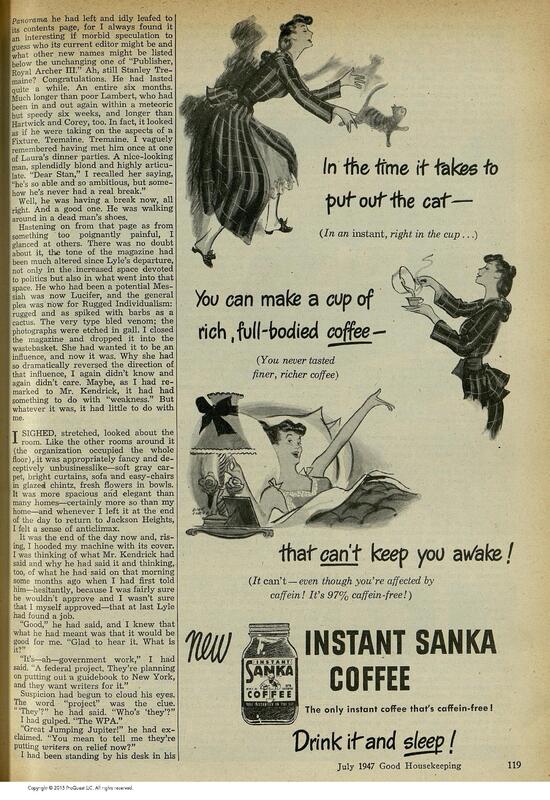After World War II: Women as Consumers
After the war ended, many women were replaced in the work force and expected to return to the home (Lewis and Neville 1995, 217). Advertisers, while not fully changing to encompass women’s new roles during the war, pushed back further to what they did best: firmly place the woman in the home. It has been broadly supported by researchers that any break in normalcy of women’s portrayal in advertisements disappeared at the end of the war and after. Any mention of women as paid laborers is no longer.
In this A&P coffee advertisement, we see a nice table setting with two cups of coffee and fancy teapots (for coffee). We see women’s gloves laid out in one spot at the table, so we can assume that a woman would take that spot at the table to drink the coffee. This advertisement highlights that their coffee is light on the purse. In effect, this emphasizes the women’s role in grocery shopping for the family. Yes, the woman was emphasized as the shopper during the war as well, however, there is now no question in their role now that the men are back from war. Additionally, this advertisement aligns with Katherine Parkin’s theme of women having the ability to determine family status. The general outlay and decorated manner of the table indicates to the viewer, mostly women considering it is in a women’s magazine, that choosing A&P coffee will result in a classier status.
In this next ad again, we see a woman as the consumer of coffee, but it highlights her expectations in the home, such as putting out the cat. Different from the advertisements during the war, which could be argued for some that they defied Katherine Parkin’s themes, these two show women as coffee consumers supplementally to their homemaking responsibilities.
Interestingly, neither of these ads show the same patterns from women as consumers of coffee during the war. There is no emphasis that the coffee will help women perform their domestic duties, rather it is just presenting that consumption is manageable amongst their domestic duties.
In this post-World War II era of coffee advertising, we see a shift in how coffee contributes to women’s domestic duties. Coffee consumption during the war was seen as a helping hand to their domestic duties or wartime responsibilities, or as a historical exception in showing women as paid laborers. After the war, their coffee consumption doesn’t appear to be a helping hand in their duties.


